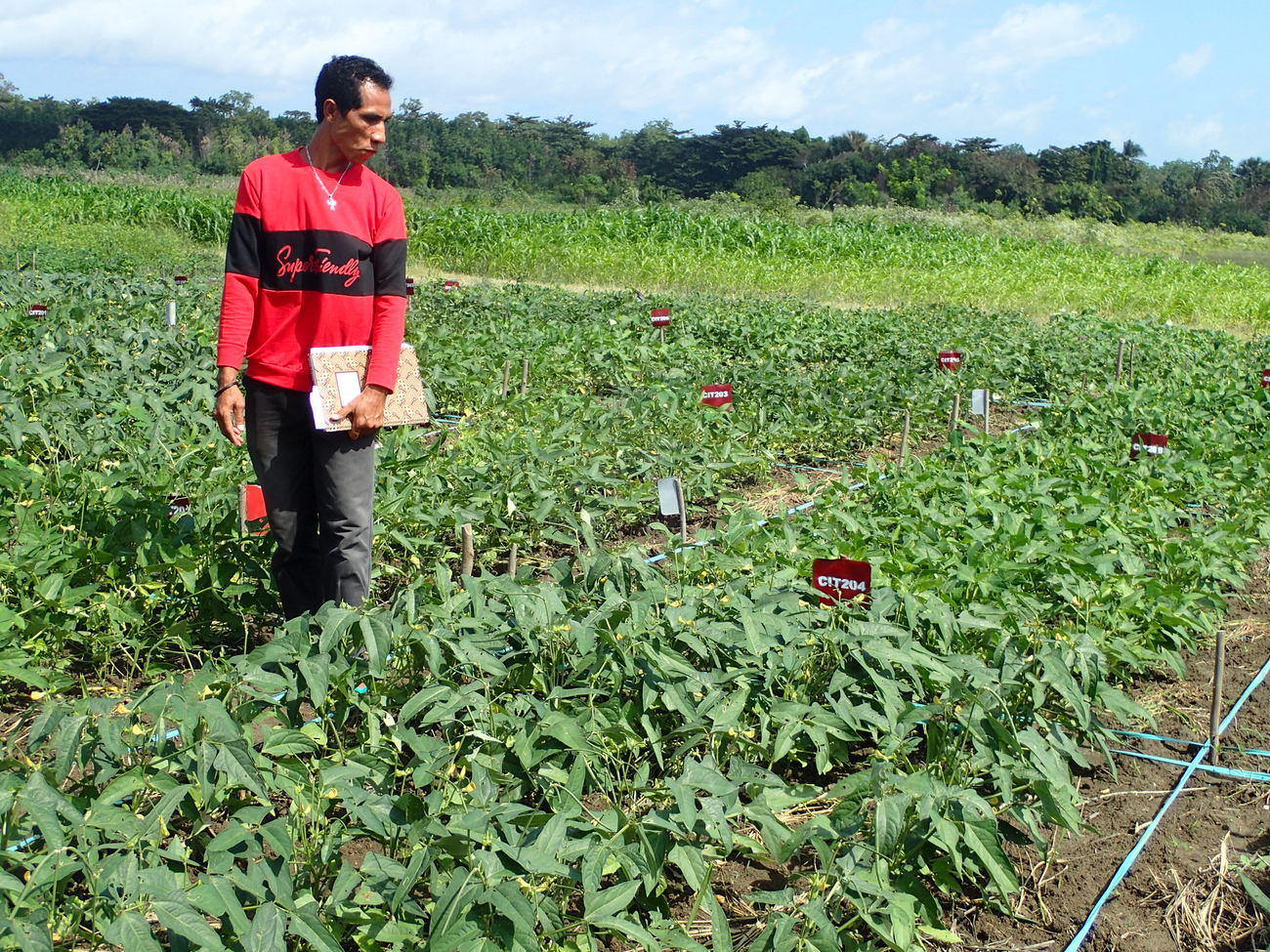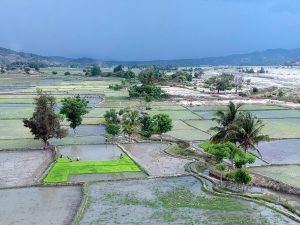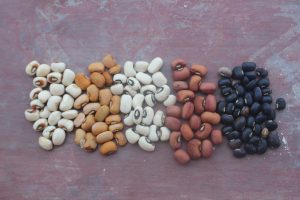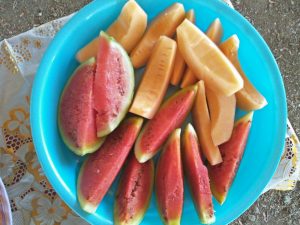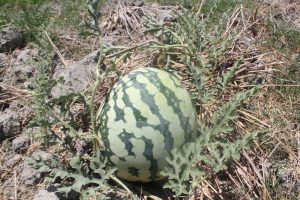AI-Com researchers and Natarbora farming families have this week locally developed farming innovations to determine the best method for efficiently growing mung bean crops on Timor-Leste’s south coast.
Last month, researchers from AI-Com and the Natarbora Technical Agricultural School conducted comparison tests of two known methods of planting mung beans: scattering seeds and planting.
While carefully planting mung bean seeds is the common method, AI-Com research conducted at Natarbora in mid-2018 showed that when mung beans are broadcasted, or scattered, into very wet rice paddies immediately after the rice harvest, the seeds can establish and grow well – significantly reducing the time and labour required by farming families planting mung beans.
This week’s comparison tests drew on local farmers’ own ideas about mung bean and rice production systems and new concepts developed by researchers.
AI-Com’s past research involved broadcasting mung bean seeds into the area just before harvesting rice plants in the rice paddy. Local farmers at Natarbora told researchers it would be better for growing mung beans in rice paddies immediately after the rice harvest.
The problem with delaying the broadcast of mung beans until after rice harvest is that weeds love the wet soil, and will grow faster and out-compete the mung beans.
The farmers came up with their best solution: harvesting the rice; using a recommended dose of the herbicide Roundup to spray dead all weeds in the rice paddy and any un-ripe rice that may remain in the paddy after harvest; waiting two to three days before flooding the paddies to soak the seeds; stopping the water before the paddy is completely full; and then scattering or planting the seeds that have germinated best.
Five local farmers took part in the comparison test, with the goal of testing production results for the two different methods of planting mung beans.
Researchers recorded the sowing time taken for each system. In the planted-out mung bean paddies, two people needed seven to nine minutes to plant out a 25 square metre area. By comparison, the broadcast system required just one person to plant out an area of the same size in just under one minute.
Researchers and farmers will wait until harvest to analyse mung bean production results, draw conclusions from the two methods, and share findings back with local farming families. This exercise demonstrates a strong spirit of innovation and experimentation within local farming communities, and AI-Com is pleased to offer our technical assistance to improving yields and systems for local families.
